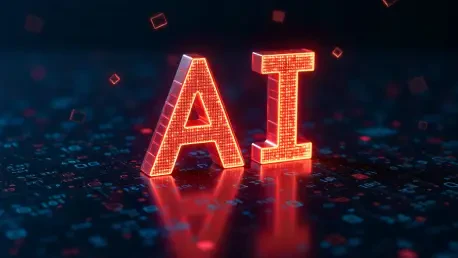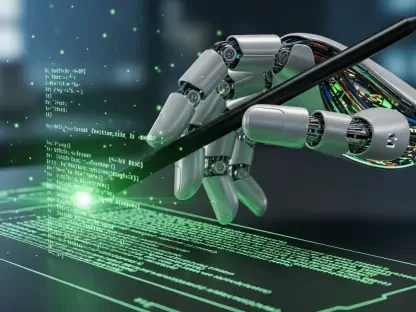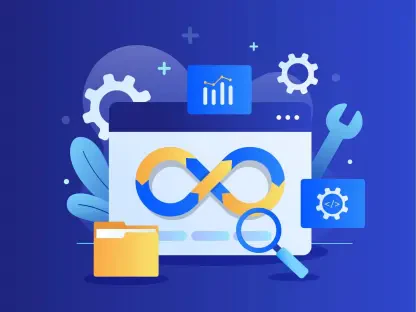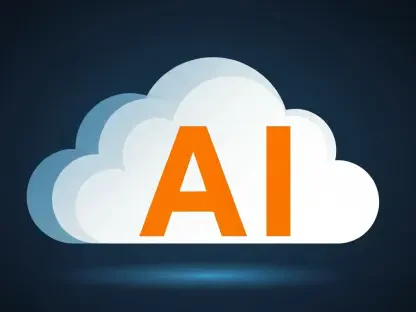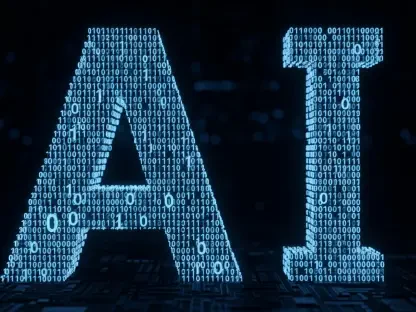Imagine a software development team bogged down by endless administrative tasks, spending hours manually creating project plans and tracking dependencies instead of focusing on coding and innovation. This scenario is all too common in the fast-paced world of DevOps, where inefficiencies can derail timelines and sap morale. Enter artificial intelligence (AI), a game-changing force poised to transform project management by automating the mundane and providing actionable insights. This review delves into the capabilities of AI-driven tools, with a spotlight on innovations like Shortcut’s Korey AI agent, to uncover how they are reshaping workflows and boosting productivity in software development.
Introduction to AI in Project Management
AI-driven project management marks a pivotal shift in how software projects are orchestrated, moving away from labor-intensive manual processes to streamlined, intelligent systems. At its core, AI leverages machine learning and natural language processing to handle tasks that once consumed significant human effort, such as planning sprints or summarizing project statuses. This evolution addresses long-standing inefficiencies in traditional approaches, where repetitive workloads often lead to burnout among team members.
The emergence of AI in this domain responds to a critical need for enhanced productivity within the tech landscape. By automating routine operations, AI agents allow teams to redirect their focus toward creative problem-solving and core development activities. This shift not only saves time but also fosters a more dynamic and responsive project environment, aligning with the rapid pace of modern software delivery.
Moreover, the integration of AI reflects a broader trend of digital transformation across industries. As software development becomes increasingly complex, the ability of AI to adapt to unique team workflows and provide real-time insights offers a competitive edge. This sets the stage for a deeper exploration of specific features and real-world impacts that define AI’s role in project management today.
Key Features of AI Agents in Project Management
Automation of Repetitive Tasks
One of the standout capabilities of AI agents lies in their ability to take over repetitive, time-consuming tasks that often burden DevOps teams. Functions such as drafting project plans, setting acceptance criteria, and mapping out dependencies can now be handled with speed and precision by tools like Shortcut’s Korey AI agent. This automation significantly reduces the administrative load, freeing up team members to engage in more strategic work.
The efficiency gained from such automation is not merely theoretical but manifests in tangible workflow improvements. For instance, creating detailed project stories or breaking down complex tasks into manageable units, which once took hours, can now be accomplished in seconds through natural language inputs. This capability ensures that teams maintain momentum without getting bogged down by paperwork or manual updates.
Beyond time savings, this feature also minimizes human error in routine processes. AI agents consistently apply predefined rules and learned patterns, ensuring accuracy in task structuring and tracking. As a result, project managers can trust that foundational elements are handled reliably, allowing for a sharper focus on higher-level decision-making.
Real-Time Insights and Adaptability
Another critical strength of AI agents is their capacity to deliver real-time visibility into project progress, pulling data from diverse sources like comments, code repositories, and integrated tools. This functionality, exemplified by systems like Korey, provides teams with up-to-the-minute status updates and highlights potential blockers before they escalate into major issues. Such transparency is invaluable in maintaining project alignment.
Equally impressive is the adaptability of these AI tools to specific team dynamics. Over time, they learn preferences and workflows, tailoring suggestions and summaries to match unique operational styles. This personalized approach transforms AI into a virtual product manager, capable of anticipating needs and offering relevant insights without constant human input.
The technical backbone of this adaptability lies in machine learning algorithms that analyze historical data and user interactions. By continuously refining their understanding of a team’s priorities, AI agents ensure that their contributions remain relevant and actionable. This evolving intelligence underscores their potential to not only support but also enhance decision-making processes in real time.
Emerging Trends in AI for Software Development
The landscape of AI in project management is witnessing a notable shift toward workflow orchestration rather than solely coding assistance. Industry leaders are recognizing that many inefficiencies in software development stem from coordination challenges rather than technical coding hurdles. AI agents are increasingly designed to address these administrative bottlenecks, streamlining communication and task allocation.
Interoperability with existing platforms is another growing focus, as seen in plans to integrate tools like Korey with popular systems such as Jira over the next few years, from 2025 onward. This trend aims to meet the diverse needs of teams by ensuring seamless connectivity across different environments. Such compatibility is crucial for widespread adoption, as it minimizes disruption to established workflows.
Additionally, there is a rising emphasis on reducing burnout through automation of non-coding tasks. By alleviating the repetitive strain on DevOps professionals, AI is positioned as a solution to improve work-life balance while maintaining high productivity levels. This holistic approach signals a maturing understanding of AI’s role in supporting not just technical output but also team well-being.
Real-World Applications of AI in DevOps
In practical settings, AI-driven tools are proving their worth by simplifying complex project management tasks within DevOps environments. For instance, Korey enables teams to monitor project statuses instantly, manage sprint planning, and organize epics with minimal manual effort. This level of automation transforms how projects are initiated and adjusted, making processes more agile.
Specific implementations highlight the technology’s impact across various organizations. Companies like The Farmer’s Dog and Dataiku have leveraged Shortcut’s AI capabilities to delegate tasks efficiently among engineers and designers, ensuring clarity in assignments. These use cases demonstrate how AI can bridge gaps in coordination, fostering smoother collaboration across departments.
Unique applications also emerge in scenarios where rapid project modifications are required. AI agents facilitate quick updates to plans and workflows, adapting to changing priorities without the delays associated with manual revisions. This responsiveness is particularly valuable in fast-moving industries where agility can determine competitive success, showcasing AI’s real-world relevance.
Challenges and Limitations of AI Adoption
Despite the promise of AI-driven project management, several challenges hinder seamless adoption. A primary concern is the uncertainty surrounding team acceptance, as some members may hesitate to rely on AI for critical tasks. Building trust in the autonomy of these tools remains a significant barrier, requiring consistent demonstration of reliability and value.
Integration with existing workflows also poses difficulties, as not all systems are immediately compatible with AI platforms. Efforts to enhance connectivity are underway, but discrepancies in tool ecosystems can slow implementation. Additionally, the need for human oversight persists, as accountability for project outcomes ultimately rests with the team, necessitating a balance between automation and manual control.
Regulatory and market barriers further complicate the landscape. Concerns over data privacy and compliance with industry standards may limit the scope of AI deployment in certain regions or sectors. Addressing these issues will be crucial for scaling adoption, as organizations must navigate a complex web of legal and ethical considerations to fully embrace AI solutions.
Future Outlook for AI in Project Management
Looking ahead, the trajectory of AI in project management points toward expanded integrations and enhanced learning capabilities. As tools evolve, they are expected to connect more deeply with a wider array of platforms, ensuring that teams can operate within familiar ecosystems without friction. This progression will likely amplify the accessibility and utility of AI across diverse project environments.
Another anticipated development is the refinement of AI’s ability to learn and predict team needs with greater accuracy. By harnessing more sophisticated algorithms, future agents could offer preemptive solutions to potential issues, further reducing manual intervention. Such advancements promise to elevate productivity while minimizing the risk of oversight in complex projects.
The long-term impact may also include a significant reduction in burnout among software developers. By automating tedious tasks and fostering a healthier balance between work and innovation, AI could reshape the industry’s approach to team management. However, maintaining human judgment alongside automation will remain essential to ensure ethical and strategic alignment in decision-making.
Conclusion and Final Assessment
Reflecting on this exploration, it becomes evident that AI-driven project management tools, such as Shortcut’s Korey, mark a transformative step in streamlining DevOps workflows. Their ability to automate repetitive tasks and provide real-time insights stands out as a powerful asset for teams striving for efficiency. The technology’s impact across various organizations underscores its practical value in enhancing coordination and responsiveness.
Challenges like trust and integration issues are acknowledged as hurdles that demand attention during adoption phases. Yet, the potential for future advancements, including broader interoperability and smarter learning capabilities, paints an optimistic picture of AI’s role in software development. These insights highlight the need for careful implementation strategies to maximize benefits.
Moving forward, teams are encouraged to start by identifying mundane tasks ripe for automation, using this as a foundation to build trust in AI tools. Establishing clear guidelines for human oversight ensures accountability remains intact. As the industry continues to evolve, fostering collaboration between developers and AI promises to unlock new levels of productivity and innovation in project management.
